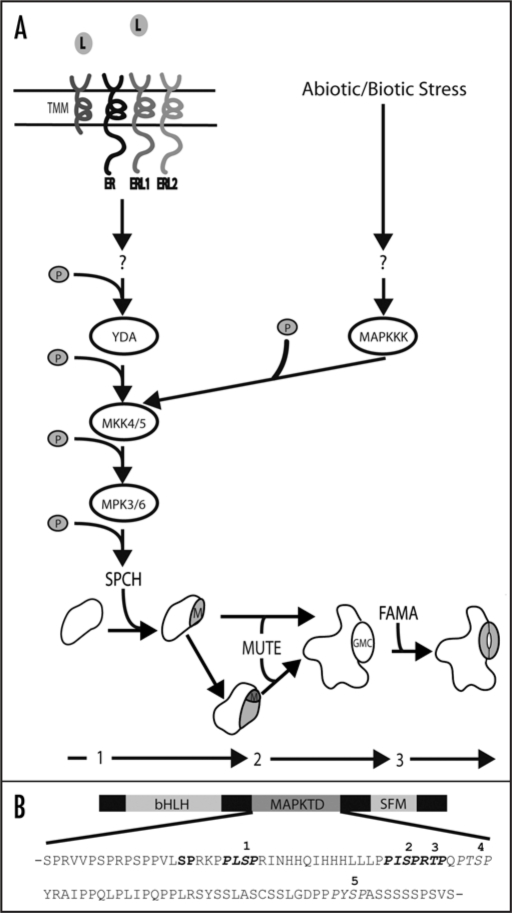Figure 1.
(A) MAPK control of stomatal development. Guard cells are formed by a three step process involving asymmetric and symmetric cell divisions (1–3). Progression to each subsequent stage is promoted by SPCH (1; creation of meristemoid (M)), MUTE (2; (M) to guard mother cell (GMC)) and FAMA (3; GMC to guard cell). Entry into the stomatal lineage is controlled by interaction of unidentified ligands with multiple receptors (ER, ERL1, ERL2 and TMM). This activates the YDA-MKK4/5-MPK3/6 MAPK module, which regulates entry into the stomatal lineage by directly phosphorylating SPCH. Alternatively, abiotic and/or biotic stresses trigger activation of yet to be identified MAPKKKs resulting in activation of MKK4/5 and MPK3/6 which may influence stomatal development patterns. (B) Protein architecture of the bHLH SPCH, which, in addition to the bHLH domain, contains a conserved C-terminus (SFM) and the unique MAPK target domain (MAPKTD). The amino acid sequence of the MAPKTD is shown with MAPK high stringency phosphorylation sites 1–5 depicted in italics. Phosphorylation sites confirmed by MS/MS analysis are depicted in bold.

